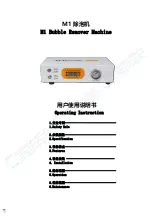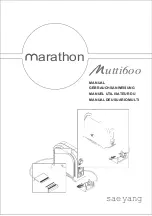
11. Commissioning
MiR250 Shelf Carrier User Guide (en) 03/2021 - v.1.4 ©Copyright 2021: Mobile Industrial Robots A/S.
118
Light, reflections, and materials
Bright sunlight and reflective or transparent objects can affect the performance of the
robot's laser scanners and cameras. This can result in the robot detecting nonexistent
objects or failing to detect real objects.
Likewise, docking to markers made in very high gloss or transparent materials can reduce
the effectiveness of the robot's scanners, hindering a successful docking.
It is the responsibility of the commissioner to test if sunlight, reflections from high gloss
materials, and transparent objects affect the robot's performance or safety.
Temperature and humidity
Temperatures outside of the approved temperature range can affect the performance and
durability of the robot—see specifications on the MiR website. This is especially relevant for
the robot's battery—see
.
Inclines, doorways, gaps, and sills
The robot must operate within the approved specifications for driving on inclines, through
doorways, and over gaps and sills—see specifications on the MiR website. Operating in areas
that do not meet the specifications may result in the robot failing to complete the missions
or losing control of its load.
Space
The robot must have sufficient space to operate efficiently. Determine during commissioning
if the robot has sufficient space to drive, dock, turn, and perform other tasks. Make sure to
test each mission under the most likely operating conditions to determine if there is enough
space for the robot to maneuver.
CAUTION
Driving in environments with no escape routes can lead to hazardous
situations. There is a risk of damage to equipment or injury to personnel.
•
At all times there must be at least 0.5 m wide and 2.1 m high pedestrian
escape routes on each side of the robot, also in operating hazard zones.
















































